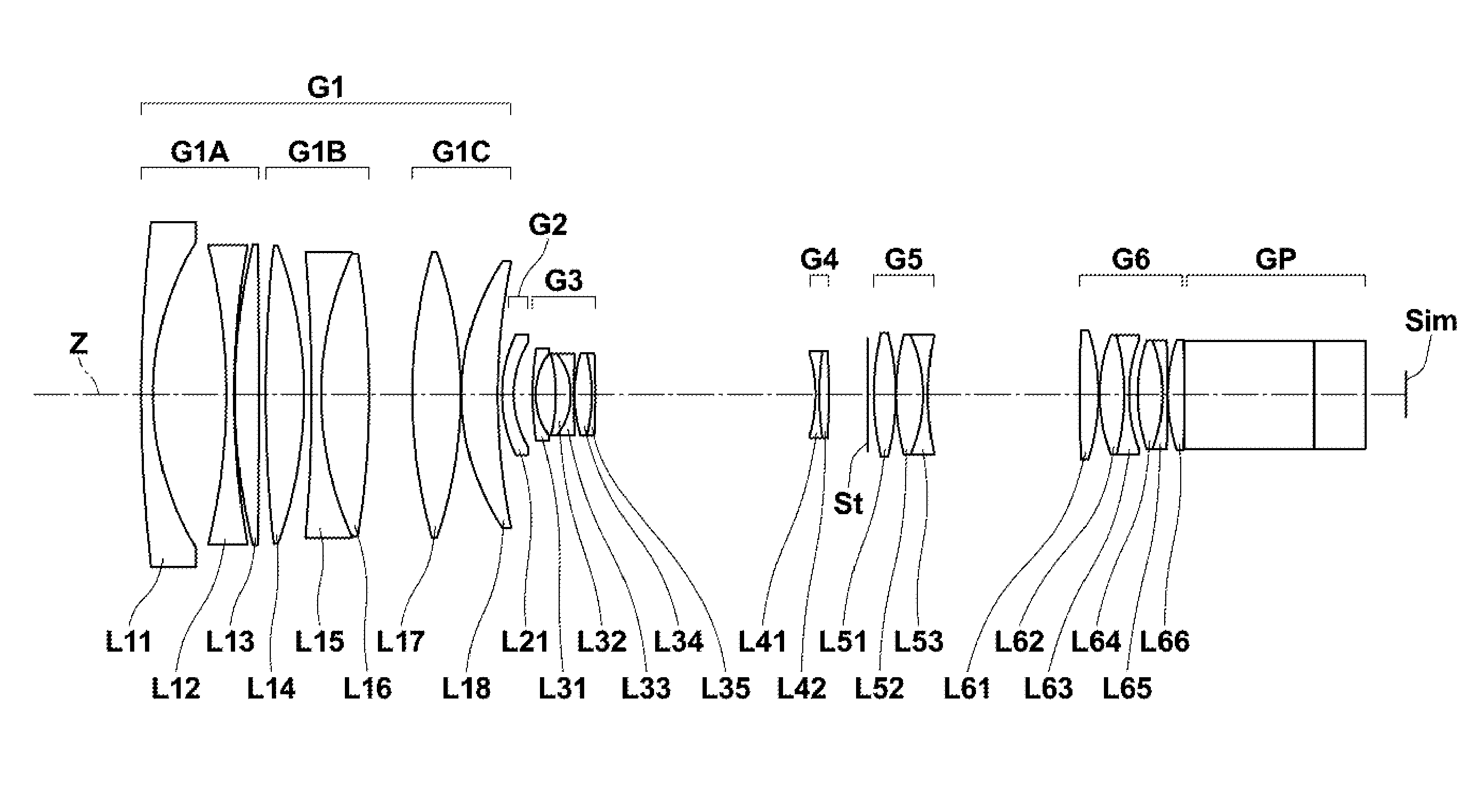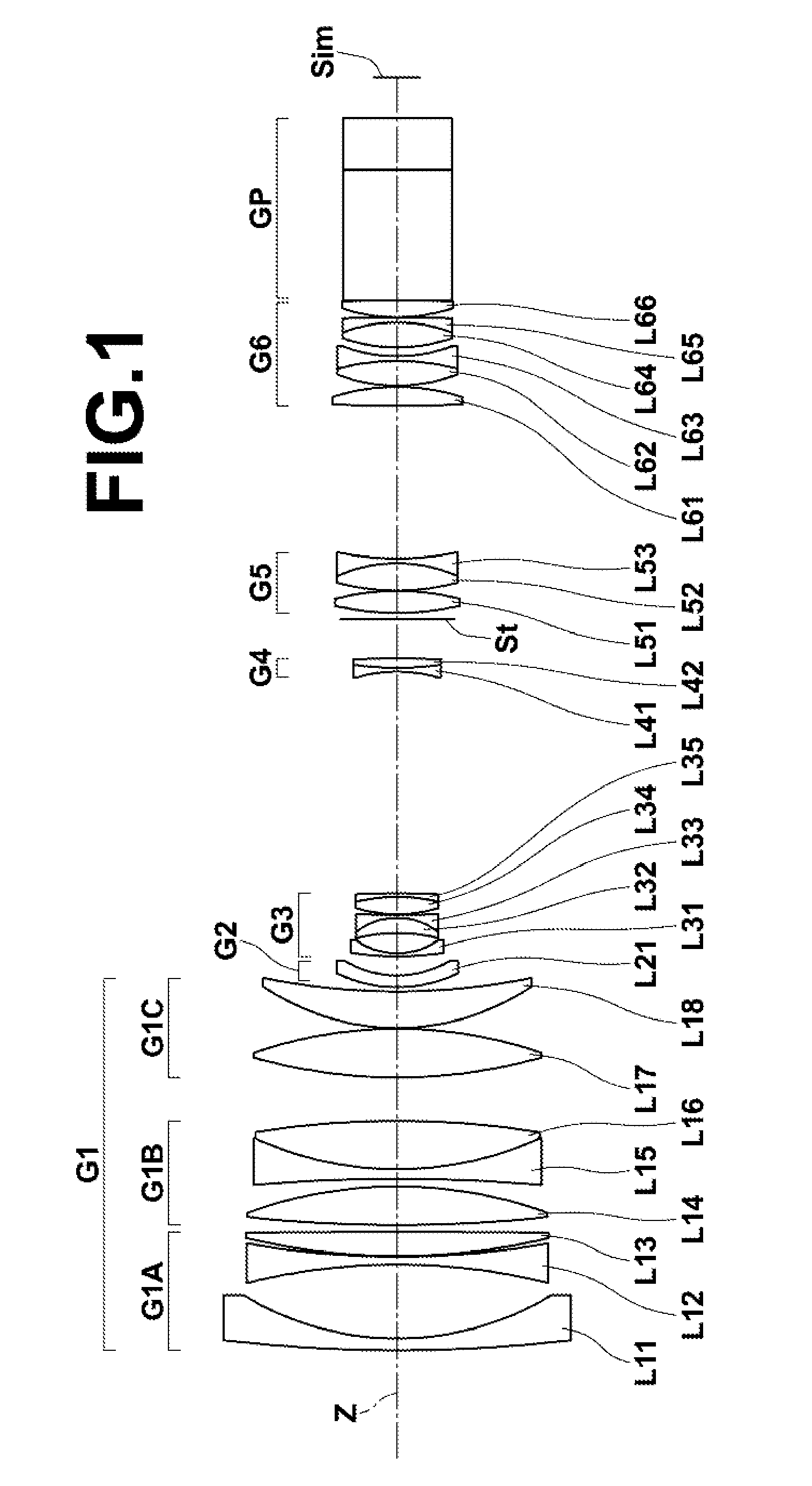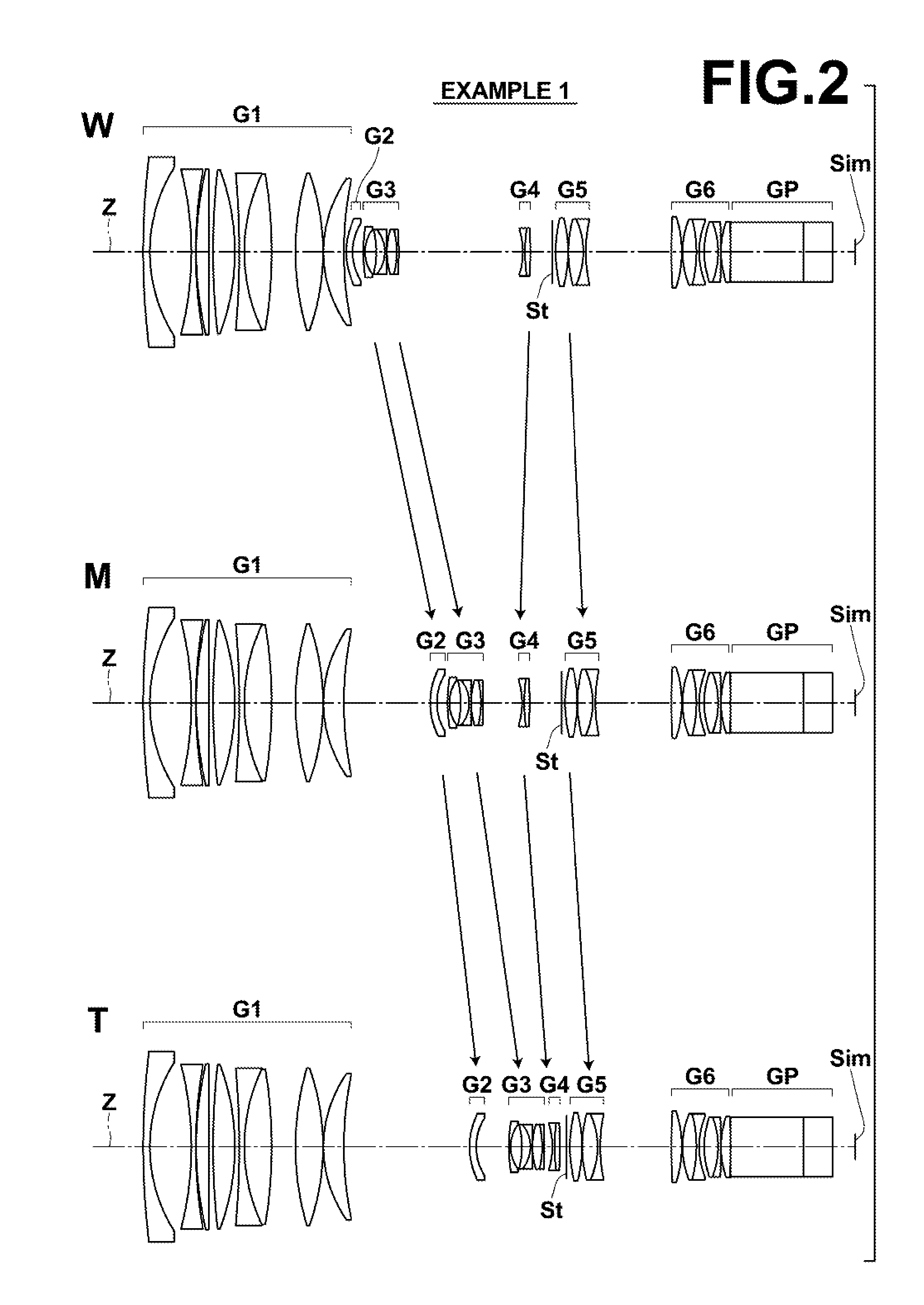Zoom lens and imaging apparatus
a zoom lens and imaging apparatus technology, applied in the field of zoom lenses and imaging apparatuses, can solve the problems of less likely to be acceptable in the market, easy choice etc., and achieve the effects of increasing the size of the apparatus, high quality, and high performan
- Summary
- Abstract
- Description
- Claims
- Application Information
AI Technical Summary
Benefits of technology
Problems solved by technology
Method used
Image
Examples
example 1
[0087]FIG. 2 is a sectional diagram illustrating the configuration of a zoom lens in Example 1. In FIG. 2, a top row, a middle row and a bottom row to which signs W, M and T are attached to the left side of the diagram, respectively, illustrate the arrangement and configuration of each lens group at the wide angle end, a middle focal length state, and the telephoto end, respectively. Further, arrows illustrated between the top row and the middle row and arrows illustrated between the middle row and the bottom row schematically illustrate a path of movement of each lens group that moves during magnification change.
[0088]As the group configuration of the zoom lens in Example 1, the zoom lens consists of six lens groups of, in order from the object side, first lens group G1 having positive refractive power, second lens group G2 having negative refractive power, third lens group G3 having negative refractive power, fourth lens group G4 having negative refractive power, fifth lens group ...
example 2
[0104]FIG. 3 is a diagram illustrating the lens configuration of a zoom lens in Example 2. The group configuration, the schematic configuration of lenses in each lens group and the position of aperture stop St in the zoom lens of Example 2 are similar to those of Example 1, which have been described already. Table 4, Table 5 and Table 6 show the basic lens data, specification and variable surface distances, and aspherical coefficients of the zoom lens in Example 2, respectively. FIG. 7, Sections A through L are aberration diagrams of the zoom lens in Example 2.
TABLE 4SiRiDiNdjνdj*1363.39743.011.8160046.62271.557718.903−147.90502.001.8830040.764219.19430.155159.54536.061.8466123.786−2289.63522.007342.83939.711.4874970.238−106.59161.859−391.39772.301.6388634.371083.478112.291.4970081.5411−214.728711.0312127.880912.391.4338795.2013−106.50220.15*1455.92669.251.5952267.7415159.7509DD[15]*1632.64703.001.8830040.761724.4041DD[17]1871.68820.801.8980034.001917.08075.0620−39.82723.821.8080922...
example 3
[0105]FIG. 4 is a diagram illustrating the lens configuration of a zoom lens in Example 3. The group configuration, the schematic configuration of lenses in each lens group and the position of aperture stop St in the zoom lens of Example 3 are similar to those of Example 1, which have been described already. Table 7, Table 8 and Table 9 show the basic lens data, specification and variable surface distances, and aspherical coefficients of the zoom lens in Example 3, respectively. FIG. 8, Sections A through L are aberration diagrams of the zoom lens in Example 3.
TABLE 7SiRiDiNdjνdj*1381.11253.001.8040046.58271.503618.213−149.52732.041.8830040.764221.22260.155177.67225.891.8466123.786−1370.43042.007267.491210.251.4874970.238−110.03031.959−390.43202.301.6200436.261083.889812.671.4387594.9311−188.761211.1312119.623212.881.4338795.2013−101.23660.33*1456.22528.701.5952267.7415144.4949DD[15]*1633.17893.001.8348142.731725.3077DD[17]1869.52820.801.8980034.001917.08505.1920−38.90843.721.808092...
PUM
 Login to View More
Login to View More Abstract
Description
Claims
Application Information
 Login to View More
Login to View More - R&D
- Intellectual Property
- Life Sciences
- Materials
- Tech Scout
- Unparalleled Data Quality
- Higher Quality Content
- 60% Fewer Hallucinations
Browse by: Latest US Patents, China's latest patents, Technical Efficacy Thesaurus, Application Domain, Technology Topic, Popular Technical Reports.
© 2025 PatSnap. All rights reserved.Legal|Privacy policy|Modern Slavery Act Transparency Statement|Sitemap|About US| Contact US: help@patsnap.com



